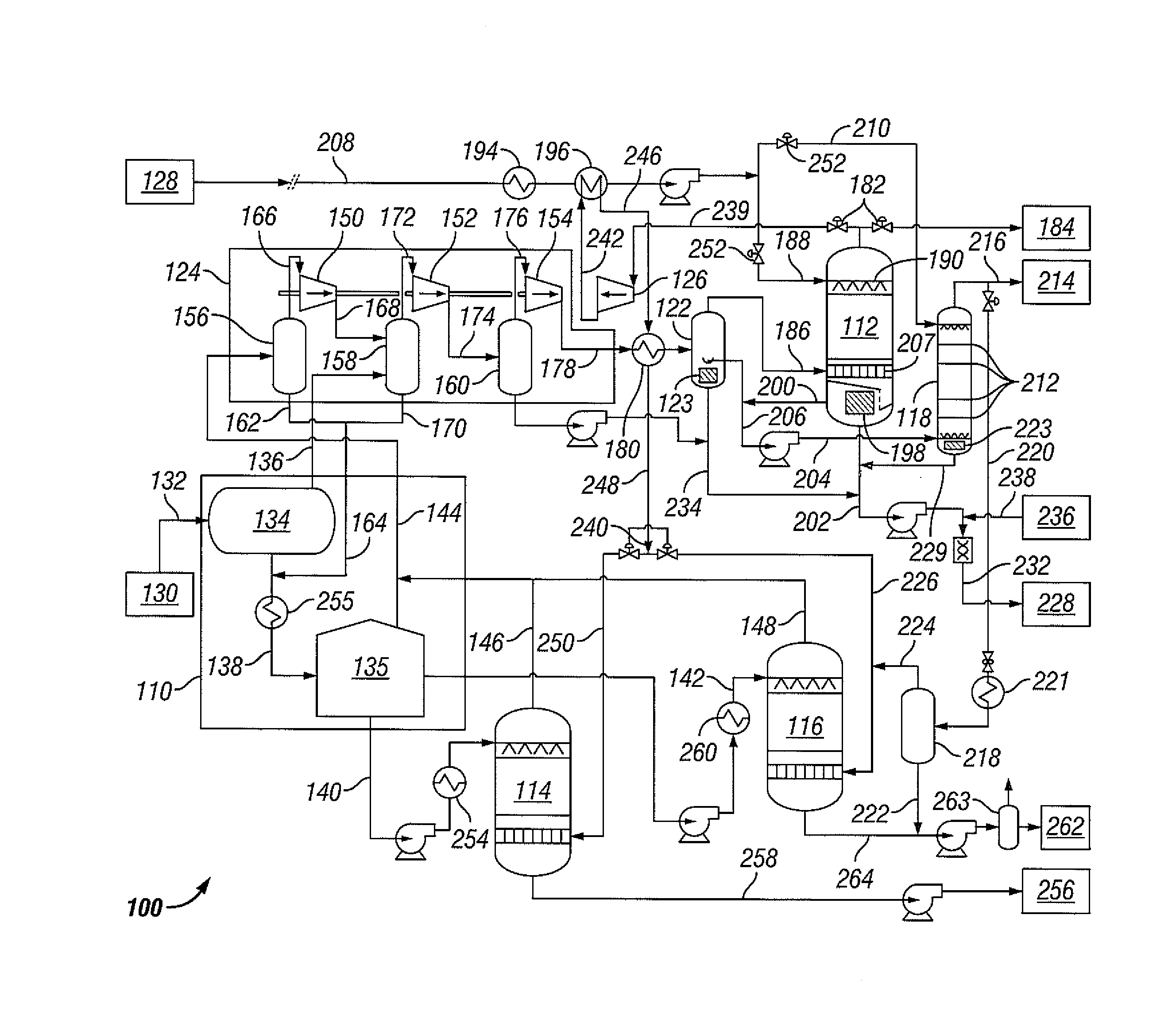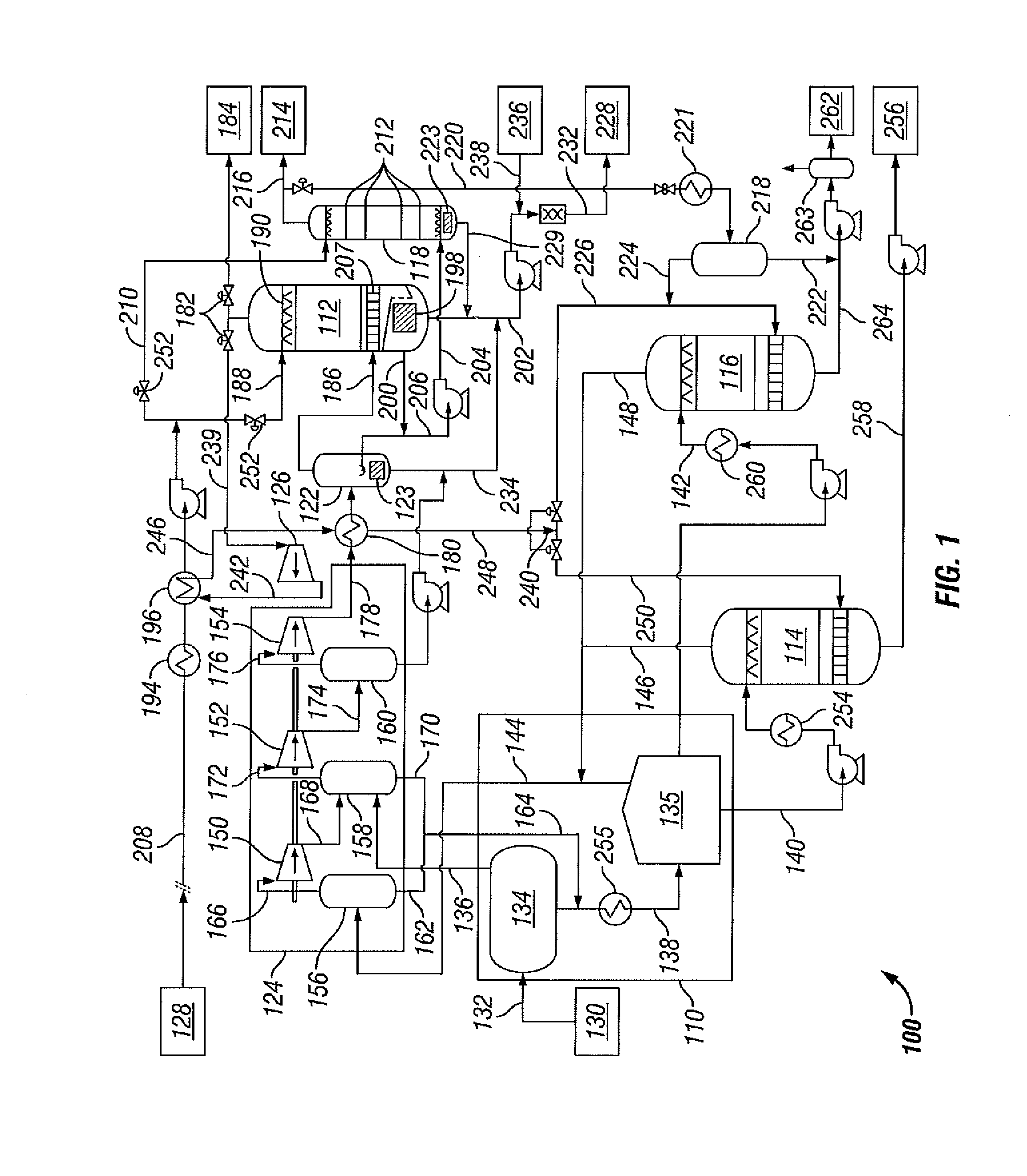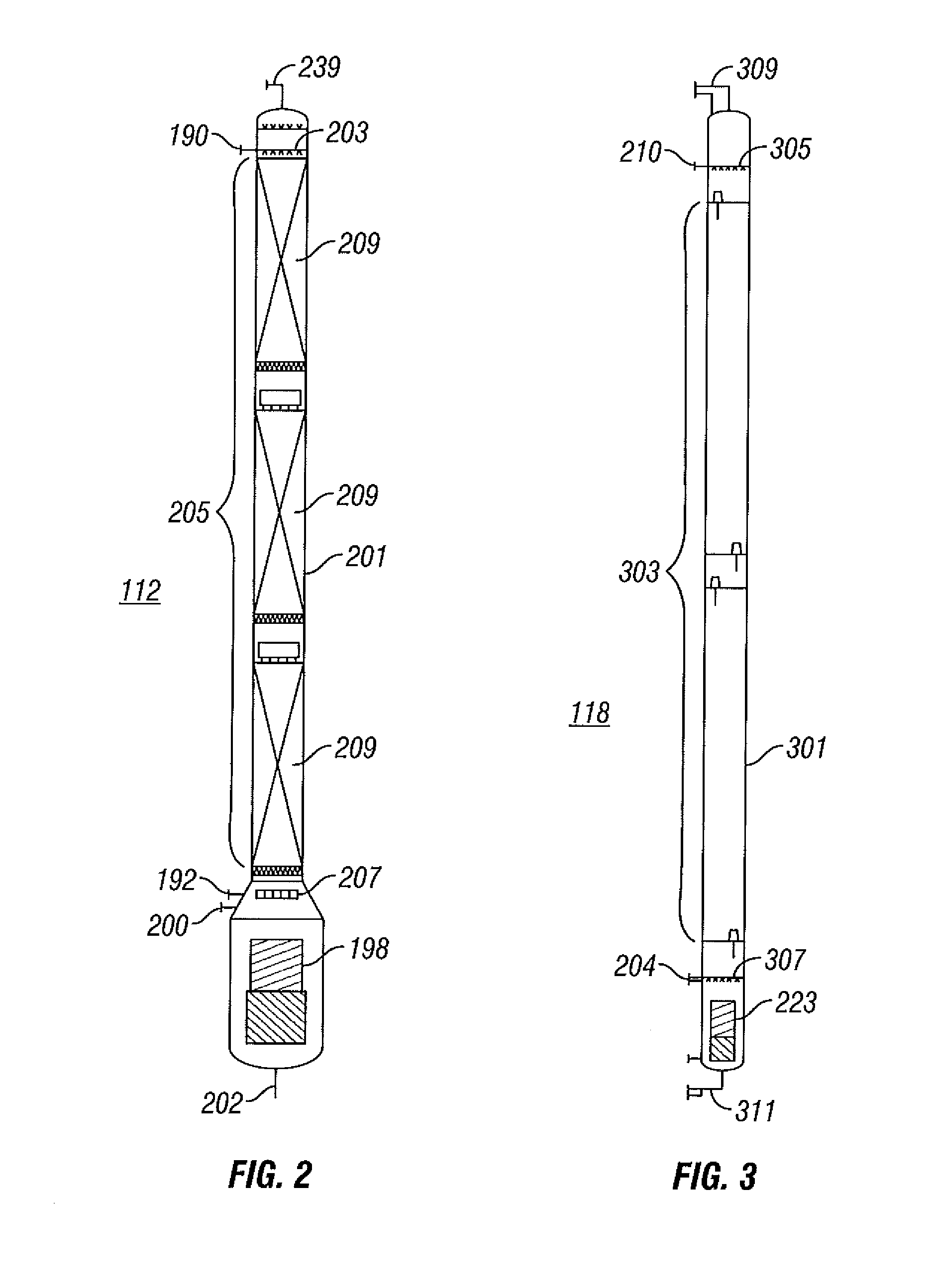Systems and method for separating dimethyl ether from oil and water
a technology of dimethyl ether and oil, applied in the separation process, the nature of treatment water, borehole/well accessories, etc., can solve the problems of removing a maximum of 50% of dme, unable to produce dme uncontaminated oil, and difficult separation of dme from oil to achieve dme uncontaminated oil
- Summary
- Abstract
- Description
- Claims
- Application Information
AI Technical Summary
Benefits of technology
Problems solved by technology
Method used
Image
Examples
Embodiment Construction
[0020]In the following detailed description, numerous specific details are set forth by way of examples in order to provide a thorough understanding of the relevant teachings. However, it should be apparent to those skilled in the art that the present teachings may be practiced without such details. In other instances, well known methods, procedures, and / or components, have been described at a relatively high-level, without detail, in order to avoid unnecessarily obscuring aspects of the present teachings.
[0021]The present disclosure describes a system and method of separation of DME from a mixture of DME, crude oil, water or brine, and a gas comprised of alkane hydrocarbons. The system comprises a gas-oil-water separation module, a DME absorber, a water stripper, a liquid-liquid extractor, an oil stripper, and a water source. In a preferred embodiment, the system may include further components including a compressor, a high pressure separator, means for expanding a gas, and heating...
PUM
| Property | Measurement | Unit |
|---|---|---|
| pressure | aaaaa | aaaaa |
| pressure | aaaaa | aaaaa |
| pressure | aaaaa | aaaaa |
Abstract
Description
Claims
Application Information
 Login to View More
Login to View More - R&D
- Intellectual Property
- Life Sciences
- Materials
- Tech Scout
- Unparalleled Data Quality
- Higher Quality Content
- 60% Fewer Hallucinations
Browse by: Latest US Patents, China's latest patents, Technical Efficacy Thesaurus, Application Domain, Technology Topic, Popular Technical Reports.
© 2025 PatSnap. All rights reserved.Legal|Privacy policy|Modern Slavery Act Transparency Statement|Sitemap|About US| Contact US: help@patsnap.com



